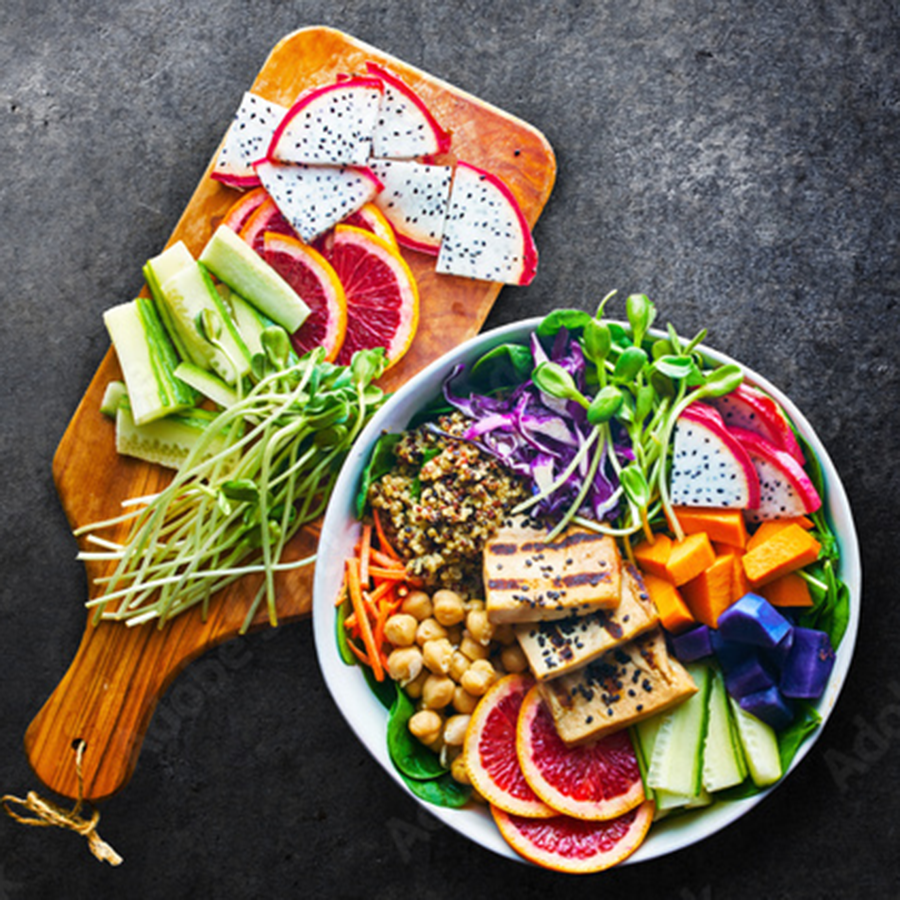Small Changes: Big Results
Forming Healthier Habits One Day at a Time
Whether you call them “resolutions” or “goals,” the changes you vow to make as the calendar rolls over to a new year can make a big difference in how you feel — physically and mentally.
Of course, getting started can be tough, but it only takes 21 days to form a habit, right?
Not necessarily. In fact, probably not.
A 2009 study published in the European Journal of Social Psychology revealed that it actually takes 18 to 254 days to form a new habit. On average, it takes 66 days for that habit to become “automatic.”
Why does it take so long to make a change we know is for the better, such as improving our health or relationships?
“Short-term rewards from a habit can make change hard. Many of our habits provide short-term gain but long-term pain,” says Marcia Morris, MD, a psychiatrist at the University of Florida who has been providing clinical care for students for over 20 years. Morris is the author of The Campus Cure: A Parent’s Guide to Mental Health and Wellness for College Students.
Morris explains that pleasure-based habits are especially tough to break. That’s because enjoyable behavior triggers the brain release of dopamine (the “feel-good” neurotransmitter).
Beyond brain chemistry, fear can also play a role, especially when relationships are involved.
“Fear can make it challenging to enact change in relationships,” says Morris. “For example, we might not set boundaries or make our needs known in our relationships because we are afraid the other person will leave. We know it is in our best interests to end a toxic relationship, but we dread a sense of loneliness after the breakup.”
So how can you start making changes for the better in your routine?
For some daily habits, Morris finds that gradually reducing the habit and substituting another one can help.
Let’s say you’re determined to change your daily ice cream habit. Rather than go “cold turkey,” you might set a goal to reduce your daily ice cream intake to three times a week, then twice a week, then once a week maximum. Increase your chances of success by substituting healthier snacks so you don’t feel deprived.
“If you feel you are spending too much time on social media, limit yourself (less than a half hour a day is best) and use your freed up time to socialize with a friend, meditate, or exercise,” Morris suggests.
When it comes to relationships, making changes such as setting boundaries, or even breaking up, can be complicated.
“It helps to have a strong social network of family and friends, so we don’t feel alone. Talking with a therapist about a difficult relationship can be extremely beneficial, but picking up the phone to make an appointment with a therapist can be challenging,” says Morris.
“You can ask a friend to hold you accountable and inquire weekly if you have made that appointment. Even a few therapy sessions can make a big difference in establishing a healthier relationship,” she notes.
Now that you know how to change, let’s consider a variety of options. Pick one (or two or three) and remember that you must give yourself the time needed to build healthier habits.
![AdobeStock_298551921 [Converted]](https://healthylivingcf.com/wp-content/uploads/2023/12/AdobeStock_298551921-Converted.jpg)
No More Comparisons
Theodore Roosevelt said, “Comparison is the thief of joy.”
And he didn’t even have to deal with the Internet.
In this day of social media and instant exposure, it’s easy to feel “less than” when you weigh your appearance, relationships, home, family, or job to what you see online. It takes a concerted effort NOT to compare ourselves with others.
Realize that you’re viewing a carefully curated highlight reel of someone’s life when you’re on Instagram and Facebook.
Social media is designed to keep us engaged, so it’s not easy to cut back. But be honest. If scrolling social media makes you feel worse about yourself, it’s time to step away, at least for a while.
Iowa State University researchers found that study participants who limited their social media usage to 30 minutes a day experienced significantly less anxiety, depression, loneliness and fear of missing out.
“Comparison is the thief of joy.” —Theodore Roosevelt

Say “Thank You”
Expressing gratitude makes you feel better and goes a long way towards strengthening both personal and professional relationships, so look for opportunities to say “thank you” to at least one person every day.
Make it a point to acknowledge the things people do to make your life easier/better/happier. Maybe you’re already keeping a gratitude journal. That’s great, but don’t just think or write your thanks, speak them. And get your kids involved so they develop the “thank you habit.”
It sounds simple, but those two little words can build bridges and warm hearts. And can’t we all use more of both?
Volunteer
Reaching out to help a neighbor in need or a local charity makes a tangible difference in your life.
Research shows that volunteering counteracts stress, depression and anxiety, increases self-confidence and provides a sense of purpose. Studies even find that volunteers have a lower mortality rate than people who don’t volunteer.
Even if you can only spare a few hours a month, you can find a charity or cause that aligns with your interests.

Pile on the Veggies
How many servings of veggies do you eat daily? Odds are, not enough.
If you consume 2,000 calories a day, you should aim for a total of 6 to 10 servings of veggies and fruits a day. This equates to 6 to 10 cups of raw veggies, or 3 to 5 cups cooked.
One serving of vegetables is:
• 1 cup of raw, leafy vegetables
• ½ cup cooked, fresh, frozen or canned
• ½ cup vegetable juice.
One serving of fruit is:
• one medium-sized piece of fruit (the size of a baseball or your fist)
• ½ cup fresh, frozen or canned
• ¼ cup dried
• ¼ cup fruit juice
“If we stop filling ourselves with processed foods, we will have room to eat the foods that are good for our bodies. Eating 6 to 10 cups of veggies a day isn’t as daunting when you’re not filled up with empty calories,” says Debbie Bookman, health and nutrition coach with Total Nutrition and Therapeutics in Lady Lake.
You can also drink your veggies. Make a green smoothie and you can easily consume at least 2 cups of vegetables. Another veggie boost: use frozen cauliflower instead of ice cubes. Add a little protein powder and that smoothie will keep you full until the next meal.
“People don’t eat enough vegetables, which means they’re not getting enough fiber. The average adult eats only 13 grams of fiber a day and should have a minimum of 25 grams per day,” says Bookman, adding that fiber has been shown to help prevent colon cancer.
Because fruit is high in sugar, stick to 2 servings a day max. The healthiest way to eat fruit is with protein or a healthy fat. (Think blueberries with Greek yogurt, or apple slices with nut seed butter.)

Pick a Book
A 2022 Gallup poll revealed that Americans read an average of 12.6 books during the previous year. That’s the lowest number of books read of any survey period going back to 1990.
That’s not surprising when you realize that the average American reads at 7th to 8th grade level and 54 percent of American adults read below 6th grade level.
How can we improve those dismal statistics? By reading more!
Studies find that reading books (actual books, not skimming articles online!) improves critical thinking, expands vocabulary, reduces stress, increases empathy, fosters connection and even improves sleep.
If you have children, make it a point to read together. And encourage them to read on their own.

Eat the Rainbow
Eating fresh food of many different colors has nothing to do with being artistic.
“Each plant has its own vitamin and mineral profiles, so even if you’re in a healthy eating rut, you may be missing out on nutrients,” says Bookman.
The simple solution? Expand the colors of the veggies and fruits you consume daily, so you’re “eating the rainbow.”

Nix the Fast Food
The drive-thru can seem like the easiest option at the end of a trying day, especially if you have kids in the vehicle.
One out of three Americans eat fast food every day, according to a survey from the U.S. Centers for Disease Control and Prevention (CDC).
“Fast food should be a rare occasion rather than a regular occurrence,” cautions Bookman. “The worst culprit is anything that is fried because they’re using the cheapest oils (like soybean and canola). These are the worst for you and those oils get reused and reheated over and over.”
If you must stop for fast food, opt for something grilled and order a salad too.
Better yet, plan ahead and eat at home.
“When people say they don’t have time to cook, there are other options,” says Bookman. “Use a meal service company like Sun Basket or Green Chef.”
You can also simplify meal prep by using an instant pot, air fryer, or slow cooker.
“If you plan meals ahead of time, wash and pre-chop your veggies, the time it takes to cook is very minimal,” says Bookman.

Swear of the Artificial Sweeteners
“Artificial sweeteners don’t have calories, but they cause your body to have a lot of inflammation,” says Bookman. “Scientific studies have shown they create all kinds of health conditions, from migraines to achy joints and even raising blood sugar.”
In addition, when people drink diet soda, they tend to feel they can eat more, so they end up consuming more calories.
“Most importantly, there’s absolutely no nutritional value in diet soda,” says Bookman.

More Water Please
It’s a simple fact. Most people don’t drink enough water.
Government statistics from 2015 to 2018 reveal that U.S. adults drank an average of just 44 ounces of plain water daily. In adults older than 60, that dropped to 36 ounces per day.
The absolute minimum ounces of water you should drink per day is half your body weight. (For a 150-lb. person, that translates to 75 ounces a day.)
“Here in Florida with our high humidity in the summer, or if you’re exercising, you really should add another 20 ounces to that,” says Bookman.
Because caffeine is a diuretic, she recommends replacing however many ounces of caffeinated beverages you drink with the same amount of water. (And that’s beyond the recommended minimum of half your body weight in ounces of water!)
Your body and brain can’t function properly if they aren’t hydrated.
The percentage of water in the human body varies somewhat by age and sex, but the average adult’s body contains 60 percent water.
The brain, however, is approximately 73 percent water, which not only protects it, but promotes normal function. Because your brain can’t store water, it requires hydration throughout the day.
Prolonged dehydration literally shrinks the size of brain cells. Even slight dehydration adds to confusion, difficulty focusing and short-term memory loss.
There’s also a troubling link between dehydration and dementia. As we age, our bodies tend to lose the trigger that says “I’m thirsty.” An older person struggling with memory loss not only doesn’t feel thirsty but can actually forget they need to drink.
Bookman emphasizes that by the time someone feels thirsty, they are already becoming dehydrated.
Energy drinks are very popular today, but many are high in sugar and loaded with caffeine.
“You can still get dehydrated drinking energy drinks and there’s not a lot of nutritional value,” says Bookman. “It’s a quick fix to raise your energy level, but then your body takes a deep dive. The body becomes ‘addicted’ to this rise and fall of energy.”
Not sure you’re properly hydrated? Check the toilet next time you “go.” Colorless or pale yellow urine typically indicates your fluid intake is adequate.


Move More
Americans sit. A lot.
Today, less than 20 percent of jobs in the U.S. workforce are physically active. According to the American Heart Association, sedentary jobs have increased 83% since 1950. In fact, many people spend more than half their day sitting down.
Long sedentary periods raise the risk of obesity, high blood pressure, high cholesterol, stroke and heart disease. Doctors say that even if you exercise, the more hours a day you spend sitting, the higher your risk of metabolic issues.
So, if your job keeps you at a desk, you’ll need to make a concerted effort to move.
Stand up, stretch, and walk for five minutes every hour. Stand when on the phone, instead of sitting. Sit on an exercise ball instead of a standard office chair at least part of the day. Walk outside on your lunch break.
In addition to incorporating more movement into your daily routine, make regular exercise a habit.
For healthy adults, the Department of Health and Human Services recommends:
• At least 150 minutes of moderate aerobic activity per week; or
• 75 minutes of vigorous activity weekly; and
• Strength training for all major muscle groups two times a week or more.
For optimal results, break it down into at least 30 minutes of activity five days a week.
You don’t have to join a gym unless you want to.
Everything from gardening to vacuuming to dancing around the living room with your kids can become aerobic if done long enough and vigorously enough to raise your heart and respiratory rates.
Physical exercise benefits virtually every part of your body, including your brain. Researchers at Stanford found that not only does exercise give an immediate boost to your cognitive skills, but regular exercise (especially between the ages of 25 and 45), decreases the risk of dementia and Alzheimer’s disease.

